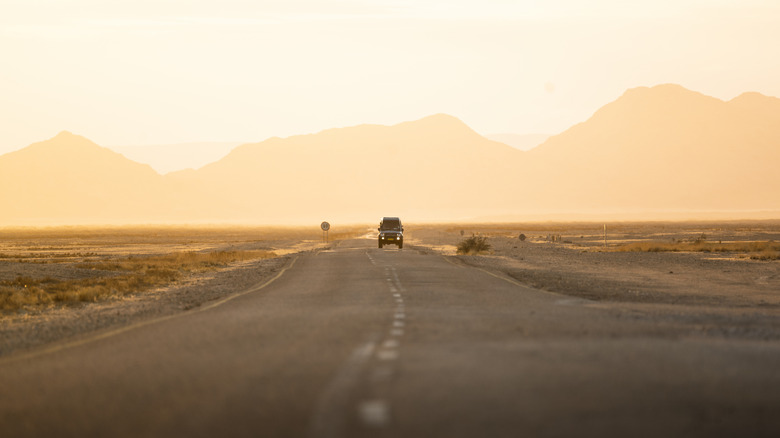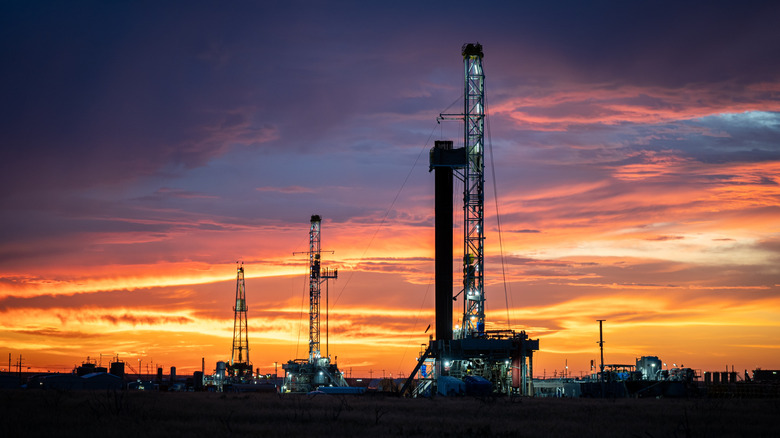America's 'Death Highway' Is A Popular Texas Road With Serious Safety Concerns And Infrastructure Issues
No one wants to hit "Death Highway" for a drive. But if you're coasting down Route 285 in West Texas, that's exactly where you are. Running about 500 miles from Santa Fe, New Mexico, all the way to tiny Sanderson, Texas, Death Highway is eight hours of endless, dusty brown terrain and scrabbly grass, plus some telephone poles and the occasional blip on the radar town. According to The Dallas Morning News, 93 people died in car crashes in 2017 along the highway within the Permian Basin, a stretch of very uninviting no-man's land between Dallas and Albuquerque. In 2013, the National Highway Traffic Safety Administration determined that Route 285 saw more deaths than any other highway in the United States.
As it turns out, there's a very concrete confluence of factors at play. In general, Death Highway's lethality comes down to badly maintained roads plus tractor-trailers amongst cars on the same highway. But specifically, it boils down to Route 285's function as a highway for transporting oil through West Texas. In-demand truck drivers are essentially competing against each other and the clock to make as many deliveries as possible, and they're paid well to complete the route. Some drivers speed, forego sleep, and make rash decisions, which, when combined with regular passenger vehicles, can turn deadly.
Practical safety advice is tough to give. Roads are sparse in that area of the U.S., and each junction can lock you onto one route for hours on end. The best advice is to take sensible precautions, like avoiding driving tired, rushing to your destination, not wearing certain items, or avoiding Route 285 altogether if you can.
Being careful on, around, and beyond Route 285
Bad roads, tired truckers, and long stretches of desert aren't unique to Death Highway. But when combined with the West Texas oil money and the determination to earn as much as possible from transporting it, Route 285 turns brutal. Potholes can sink several feet deep, which can all but kill a car and cause trouble for giant 18-wheelers. Plus, not all truckers are veterans who've been in the game since their 20s. Some truckers are new to the long-haul and might be extra careless while hoofing it up and down the highway. After all, the entire 86,000-square-mile Permian Basin through West Texas accounts for a significant percentage of the U.S.'s crude oil and natural gas.
So how does this affect regular drivers who might be passing through the area? The U.S. Southwest has been a legendary road region since the old Route 66, which notably runs through Texas, New Mexico, Arizona, and California. Arguably, Route 66 echoed the 19th-century Westward Expansion before it. Travelers through West Texas and beyond, Route 285 or otherwise, should watch out for speeding truckers and potholes, but not be deterred in their travel plans. It'd also be a wise idea to take common-sense driving precautions like keeping your eyes on the road and not on your phone or GPS, admitting when you need a break, finding a place to pause in bad weather, and not driving at night. Nobody wants to become the latest fatality statistic for Route 285 or any other road.

